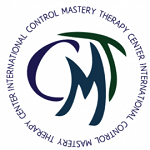- Have any questions?
- 510-612-6392
- infocmtcenter@gmail.com
What happens when you pass a test?
July 4, 2017OVERCOMING PATHOGENIC BELIEFS: How do patients work in treatment to overcome these crippling beliefs? – Through Testing, Identification and Insight.
July 4, 2017What is a test? CMT believes that people regulate their own treatment. And that they come to therapy with a plan to get better. A test is one way for a patient to evaluate reality.
Patients think unconsciously about their problems, and they figure out ways to disconfirm these crippling beliefs. Their symptoms such as compulsions or inhibitions can be understood as efforts to avoid situations that are perceived as dangerous because of their pathogenic beliefs. A test is a way for patients to evaluate the reality. During the testing process, the patient acts according to their pathogenic belief. They need to test to see if the conditions for safety have been met. If the patient succeeds by testing the therapist to disconfirm her/her pathogenic beliefs, then she/he may feel safe to list repressions and denials. This would allow the patient to become more aware of his/her beliefs and the impulses, attitudes, goals that she repressed for these beliefs. Patients need to feel safe before they can go on with the work they came to do.
As Bush briefly summarizes the importance of testing, testing is the primary means that a patient uses to:
1 – Disconfirm their pathogenic beliefs
2 – Master their childhood traumas
3 – Overcome their pathological identifications and compliances
4 – Clarify their therapist’s intentions AND
5 – Develop new response patterns by identifying with the therapist
(Bush, 2008)
And testing is the way that patients attempt to learn:
1 – How safe it is and how possible it is to collaborate with a therapist.
2 – How much the therapist will support their goals and provide helpful insights.
The intensity and duration of a test may vary a lot.
A test can basically go on for a few minutes or it can go on for almost the entire session. Even the way of testing is case-specific. Also the passing or failing a test by the therapist can be at different degrees. The test can be passed right away, partially passed, partially failed or completely failed.
How do we infer what and how our patient is testing?
Understanding my patients tests requires using everything that I have learned about them. It starts with things in the first session, including the presenting complaints, goals, traumas, relationships, experiences, pathogenic beliefs, whatever it takes to create a specific and detailed patient profile.
Much about understanding the testing process has to do with the therapist’s feelings at the time of the interactions. Part of understanding any test is recognizing my own internal process at the time. Often in the testing process the client is teaching and coaching the therapist on how to behave, and what their own internal experience is all about.
1 – Notice the case specific use of the plan
2 – Test theory by observations of our patients behavior – are they bolder / do they have increased insight
3 – Tests are like all behavior: we are always testing and it serves a variety of functions
4 – Testing makes use of everyday real problems and events that would be likely to promote worry or rejection
5 – Testing arouses powerful feelings – it could be we find ourselves bored, or with contempt, it could feel seductive, to help could feel impossible, we fall silence, they may fail to pay, or could feel insulted
6 – Tests can evoke in us a pull for intervention
7 – We could feel as though the situation were a wild exaggeration
8 – And it may feel out of keeping with our patient’s normal behavior
Patients may use different behaviors to test the same beliefs
1 – We may only understood after we pass the test
2 – Testing may be done with attitudes or affection
3 – May walk in with easy tests – Where do you want me to start, versus difficult tests – Not sure I want to be here. The intensity of the testing will be related to how scared and traumatized they are.
